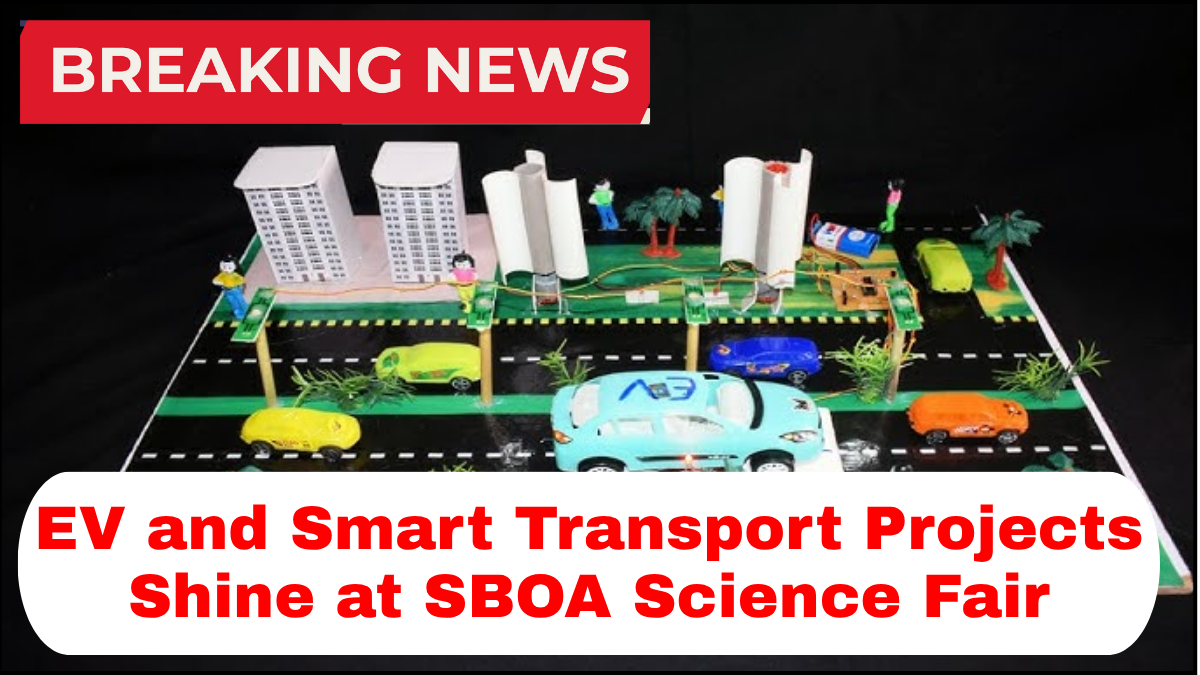The recent SBOA Science Fair turned heads and sparked conversations with a spotlight on EV science fair exhibits and intelligent transportation solutions. Students from across grades showcased groundbreaking school auto tech projects, blending innovation with environmental responsibility. These future-forward ideas reflect a growing shift in how the next generation sees mobility—not just as a means of getting around, but as an opportunity to build a cleaner, smarter world.

Smart Mobility: The Star of the Fair
Electric Vehicles (EVs) were more than just a trend at this year’s fair—they were a statement. From fully functioning mini EVs to AI-assisted traffic systems, students demonstrated a strong grasp of emerging technologies and their potential societal impact.
One standout project featured a scaled-down prototype of an electric car powered by solar panels, which aimed to address battery range anxiety by supplementing charge while in motion. The student team behind it explained how integrating renewable energy into EVs can dramatically reduce carbon emissions while improving efficiency in areas with limited charging infrastructure.
Another group built a modular EV charging station that can be relocated during emergencies—an idea inspired by power shortages during natural disasters. Judges praised the project for its practicality and relevance in disaster response and remote area connectivity.
Data-Driven Traffic Solutions
Beyond vehicles, students tackled transport from a systems perspective. A ninth-grade team presented a smart traffic light system using sensors and machine learning algorithms to adjust signals based on real-time congestion. Their simulation showed a significant reduction in idle time at intersections, offering a glimpse into how intelligent infrastructure could ease urban traffic woes.
A separate exhibit explored vehicle-to-vehicle (V2V) communication, demonstrating how connected cars could share data to avoid collisions and reroute traffic. Using simple microcontrollers and GPS modules, the students recreated a miniature city grid where toy cars communicated to prevent pile-ups—a vivid visualization of tomorrow’s road safety protocols.
Eco-Conscious Innovation
Many projects went beyond technical brilliance to consider the bigger picture—sustainability. For instance, a group of tenth graders designed an EV battery recycling system to extract usable lithium and cobalt from spent cells. They emphasized the need to close the loop in EV production to truly make it green.
Others explored bio-based composites as a substitute for traditional auto materials. A working model of a lightweight EV chassis made from hemp fiber drew significant interest. The team argued that using biodegradable materials in auto manufacturing could lessen the environmental toll from both production and disposal.
Learning Beyond the Classroom
What made these EV science fair exhibits remarkable wasn’t just their innovation—it was the depth of understanding. These were not just school projects; they were early glimpses of real-world problem-solving. Students had clearly invested time in research, consulted mentors, and in some cases, even reached out to professionals in the automotive or tech sectors.
The fair served as a hands-on laboratory for students to apply what they’ve learned in physics, chemistry, coding, and engineering to meaningful ends. It also encouraged interdisciplinary thinking—merging environmental science, urban planning, and computer science under a single theme of mobility innovation.
Community and Industry Impact
Several exhibits attracted attention from local business owners and industry representatives invited as guest judges. Some projects are now being considered for incubation support from local innovation hubs. SBOA’s approach of integrating real-world exposure with academic challenges is clearly paying off, nurturing talent that may one day redefine transport as we know it.
FAQs
What are EV science fair exhibits?
EV science fair exhibits are student projects that focus on Electric Vehicles and related technologies. These may include working EV models, charging systems, traffic automation, and sustainability innovations aimed at improving modern transportation.
Why are EV and smart transport themes important in school auto tech projects?
These themes introduce students to real-world challenges like climate change, urban congestion, and energy efficiency. They also help students develop critical STEM skills by working on solutions that matter globally.
How can schools support students working on auto tech projects?
Schools can provide access to basic electronics, mentoring support, research tools, and partnerships with local tech firms or universities. Encouraging interdisciplinary collaboration and offering real-world exposure can also greatly enhance learning.
Are these projects purely academic or do they have real-world applications?
Many of the projects showcased at the SBOA Science Fair demonstrated clear potential for real-world application. From traffic decongestion solutions to mobile EV chargers, students are thinking far beyond theoretical concepts.
click here to learn more